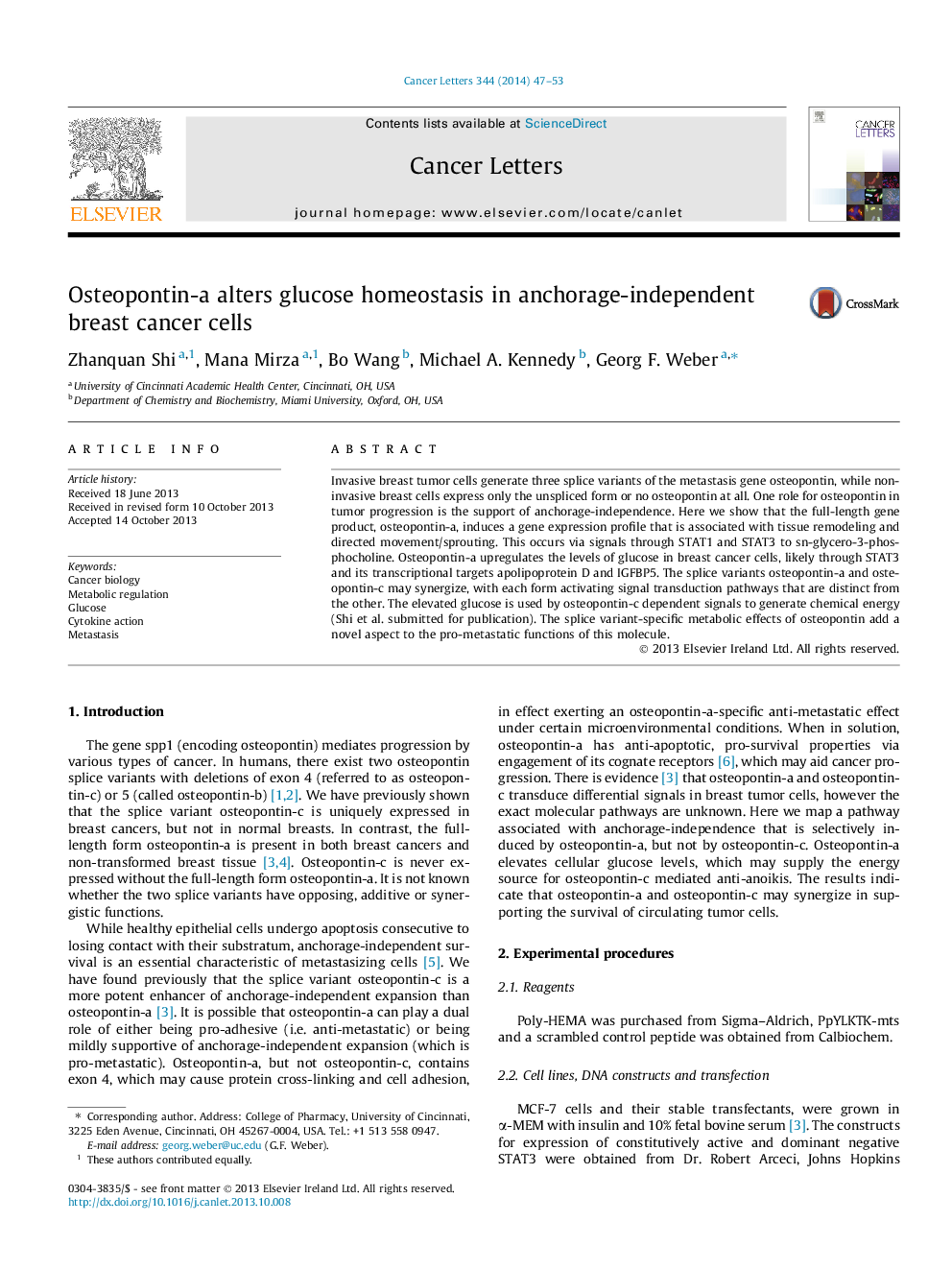| Article ID | Journal | Published Year | Pages | File Type |
|---|---|---|---|---|
| 2112708 | Cancer Letters | 2014 | 7 Pages |
•Deadherent expansion is achieved through metabolic adjustment within the cancer cells.•One role for osteopontin in tumor progression is the support of anchorage-independence.•Osteopontin-a upregulates glucose through STAT3, apolipoprotein D and IGFBP5.•Osteopontin-a and -c synergize, activating mutually distinct signal transduction pathways.•Metabolic responses to environmental cues are common in cell biology.
Invasive breast tumor cells generate three splice variants of the metastasis gene osteopontin, while non-invasive breast cells express only the unspliced form or no osteopontin at all. One role for osteopontin in tumor progression is the support of anchorage-independence. Here we show that the full-length gene product, osteopontin-a, induces a gene expression profile that is associated with tissue remodeling and directed movement/sprouting. This occurs via signals through STAT1 and STAT3 to sn-glycero-3-phosphocholine. Osteopontin-a upregulates the levels of glucose in breast cancer cells, likely through STAT3 and its transcriptional targets apolipoprotein D and IGFBP5. The splice variants osteopontin-a and osteopontin-c may synergize, with each form activating signal transduction pathways that are distinct from the other. The elevated glucose is used by osteopontin-c dependent signals to generate chemical energy (Shi et al. submitted for publication). The splice variant-specific metabolic effects of osteopontin add a novel aspect to the pro-metastatic functions of this molecule.
